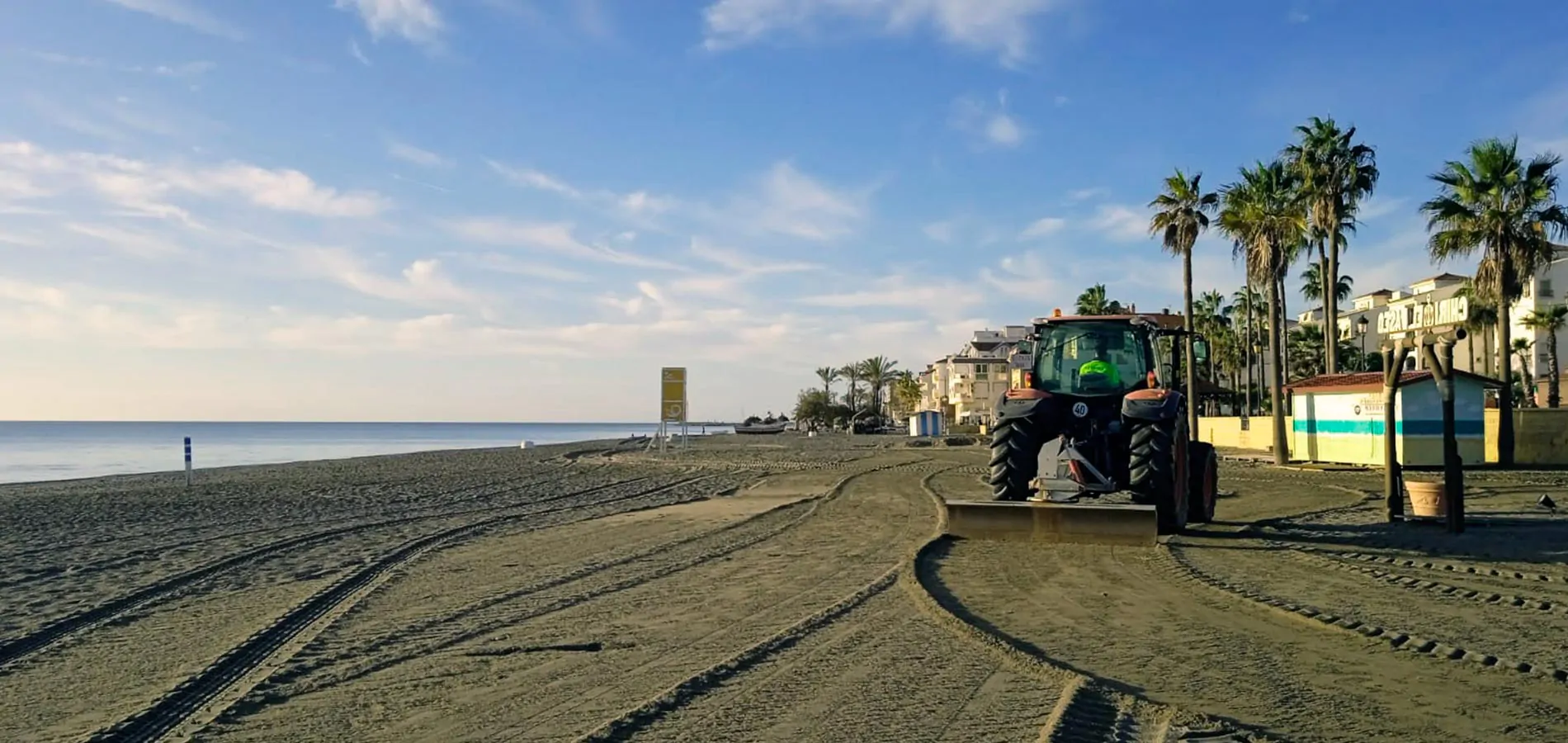Beaches accumulate all kinds of debris, both from direct human activity and the activity of the tides and sea currents. Organic and inorganic waste accumulates in them, the removal of which requires the application of various techniques and methods. In addition to being an environmental pollution problem, this waste is also a public health and safety problem, as some of the waste can be hazardous, e.g. glass or fishing gear washed back into the sea.
The most frequent waste is plastics, bottles and bags, glass, food waste, cigarettes, and, more recently, masks. In addition, waste deposited on beaches, algae, and other organic debris from the seabed is widespread. All this poses an obvious environmental degradation problem, requiring specialised teams’ action.
Althenia Sando has a business division specialising in cleaning, sanitation and maintaining beaches and coasts to protect coastal ecosystems. Its actions include both the removal of waste and the cleaning of sargassum and seaweed, as well as environmental education to act at the source of the problem.
Beach cleaning processes require prior analysis of the type of sand on the beach (fine sand, medium sand, small stones), the quality of the sand (existence of rocks in the sand) and the volume of use of the sand, which will determine the ideal mechanical and human resources for its removal and treatment.
Among the most common mechanical cleaning treatments used by the company in its cleaning work are: sieving machines, self-propelled or towed by tractors or waste collection nets, whose typology varies depending on the previous analysis of the type of sand on the beach or the size of the machine, both the size of the beach and its accesses. Another mechanical treatment used is the use of towed stone removers for the removal of stones from sandbanks.
Due to the recent widespread warming of sea and ocean temperatures and the proliferation of invasive species, significant accumulations of tidal seaweed are occurring. Traditional methods of disposal of this organic waste involve shovels that remove algae together with sand, which cannot be separated by this method and deposit it in trucks for transport to landfill sites.
In this context, the innovative services provided by Althenia Sando, which are capable of discriminating algae from other types of materials in real time and enabling the recovery of this waste by converting it into products that can be used for other purposes, such as biomass, are essential. Providing solutions from R&D&i and taking advantage of Sando’s experience in coastal zone monitoring projects, such as COSTAVER.

Beach cleaning
Clean-up solutions that protect marine and coastal ecosystems
Beach cleaning
We deploy sustainable cleaning and maintenance solutions for the enjoyment of beaches by their citizens and the protection of native species.
The accumulation of waste in coastal areas and oceans, whether man-made or natural, causes negative impacts on the environment and the health of the population. Through cleaning, sanitation, and maintenance solutions for beaches and coastal areas, Althenia Sando protects these ecosystems and maintains the attractiveness of tourist sites.